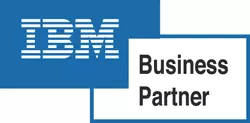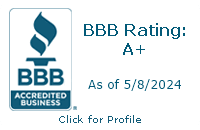Understanding the difference between your business "losing weight" and "getting lean."

Let's recap some of the management techniques or issues that have been introduced since 1980:
- Reengineering
- Activity-Based Costing
- Empowerment
- Total Quality Management
- Enterprise Resource Planning
- Customer Relationship Management
- Year 2000
- Outsourcing
- Business Service Center
- Downsizing
- Rightsizing
- Economic Value Added
- and so on…
These techniques all help managers do more with less, but they are all equivalent to being on a diet. Corporate America has been on a 20-year diet. Companies have lost weight, but only a handful of companies seem to be doing fundamentally well. Why is that?
The reason may be the difference between losing weight and getting lean! Most people who want to lose weight will go on a diet – but, if they lose weight, they will lose both muscle and fat. What they really wanted to do is lose the fat, but keep the muscle.
Muscle allows companies to outdistance competitors. Muscle improves reflexes and response times. Muscle enables companies to consistently earn strong returns. Muscle looks good and feels good.
How does a company develop muscle? The book Lean Thinking identified five principles of lean thinking, and related techniques to implement the principles:
- Providing customer value through target costing.
- Eliminating waste through value stream management.
- Improving flow through capacity management.
- Managing pull through material requirements planning.
- Achieving perfection through continuous process improvement.
In addition to boiling down many initiatives from the past 20 years to a manageable few, the book also addresses a key technique that underlies all of these principles – having a process orientation. A process orientation makes these techniques work by:
- Assessing the value associated with various activities, then working to streamline the real value-added activities, minimize the business value-added activities, and eliminate the non-value-added activities.
- Adopting the attitude that "improving process flow means eliminating company waste," since anything that slows down the value stream to customers is designated as waste.
- Implementing fast, flexible processes for design, production, and delivery of products and services to keep these flowing to the customer.
- Analyzing results of the processes, looking for ways to further reduce cycle time, which will simultaneously improve quality and cut costs.
In the human body, cardiovascular exercise, strength training, stretching, and nutrition all help one reduce body fat, become lean, and build muscle – but the anchor is improving the body's ability to burn fat through cardiovascular exercise. Likewise, the five lean thinking principles contribute to a lean enterprise – but they are anchored in a process view of the business. If you want to build the muscles of your business, then start exercising and developing your processes – and we can be your company's trainer!
![]()
Todd L. Herman
Client Project Update:
I am pleased to provide you with an update on our client projects. Projects we have completed over this period are...
Investigated Inventory Control Processes
Investigated inventory control processes and systems between an apparel manufacturer's domestic facilities and its offshore manufacturers, identifying inventory issues, reducing losses, and providing improved procedures and systems.
Designed and Implemented a Workflow Automation System
Designed and implemented a workflow automation system to provide structure and improved communications, reducing the cycle time to implement marketing programs with contract manufacturers.
Evaluated Workflow Within the Sales Administration Function
Evaluated workflow within the Sales Administration function of a manufacturer, uncovering strategy, processing, organization, systems, and training issues, and recommending improvements to reduce the cost and improve the quality of this work.
Assisted a Not-for-Profit Agency in its Financial Affairs
Assisted a not-for-profit agency in its financial affairs, identifying, researching, and resolving various accounting-related issues.
Enhanced an Existing Lotus Notes Database
Enhanced an existing Lotus Notes database that an appliance manufacturer uses in the project quoting process, allowing for greater security and flexibility in printing, faxing, and e-mailing quotes.
Future projects we are planning include...
Resolve Accounts Payable Conversion Issues
Continue to research and resolve Accounts Payable conversion issues from a system implementation, assuring correctness of accruals and recommending new procedures for efficient operations.
Tested Functionality and Cost System Results
Test the functionality and computed results of a cost system for a manufacturer, determining the accuracy and reliability of the products, production processes, cost assumptions, and other variables.
Team Leader on Software Conversion
Act as a team leader on a Lawson software conversion, working with divisional companies as they migrate from their legacy system onto a new shared services platform.
Design a Packaging Development System
Design a packaging development workflow automation system for a manufacturer, reducing process cycle time by standardizing and streamlining the process, eliminating transport and waiting time, and providing accountability for all process tasks.
Evaluate Workflow Within Accounts Payable
Evaluate the workflow for several common processes within the Accounts Payable function, recommending ways to improve quality, productivity, effectiveness, communication, and accountability.
Automating Value Statement & Commercial Invoice Processing
Work with a new corporation as it establishes procedures for manufacturing offshore, automating both the value statement and commercial invoice processing.
Analyze Accounting & System Changes
Work with an apparel company to analyze the accounting and systems changes necessary to support a change in its offshore business structure, outlining the issues and specifying needed systems changes.






